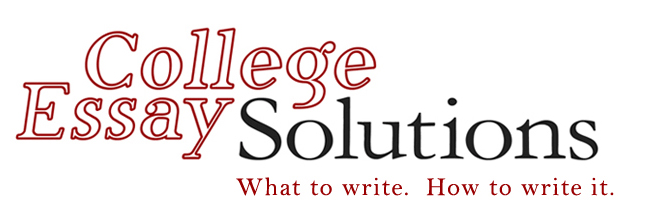First things first… There is nothing wrong with using an essay you wrote for one school and revising it to fit another school’s prompt. It’s your work, you can do with it what you like. Plus, given the time and effort spent on getting your applications out (slightly less than landing a spaceship on Mars), it’s more than all right to save yourself a little work.
But there are some guidelines.
1. Concede at the beginning that you won’t be able to use the essay exactly as is.
Very few application essays can simply be plugged into another school’s prompt, without making any changes at all. So before you begin, accept that you’re going to have to tinker.
2. Comb the essay for direct references to the original prompt.
If the original essay asked you to describe the world you’ve come from and how it affects your dreams and aspirations (University of California essay prompt), for example, you will most likely have used those key words (“world I come from”, “dreams”, “aspirations”) in the body of the essay. That’s as it should be. Yet in adapting the essay to another prompt, those words are going to indicate to a reader that you are using a previously written essay. (Admissions Directors are usually highly aware of the prompts used by other schools.) And, although there’s nothing wrong with that, everyone likes to think they’re special. Therefore, your essay will be more effective and leave a better impression if you…
3. Delete or change all evidence of the original prompt.
This is an editing issue that, in most cases, is fairly easy to execute. Simply keep the original ideas intact, but change the vocabulary used to describe them. Using the example from above, you would change all references to “the world I come” and “dreams and aspirations” to similar words and phrases such as “my family/my upbringing/the values my parents instilled in me/etc.” and “hopes/goals/career direction/etc.” In this way – putting a fresh coat of verbiage on your essay – you will be erasing any evidence of the original prompt and positioning your essay in the most positive way you can.
4. Don’t get locked into using all the same ideas.
Sometimes only three out of four of the ideas in your original essay are usable in an adaptation. If that is the case, accept it and don’t try to force that fourth idea in where it doesn’t belong. You might need to do some new writing, but it will still be a lot easier than starting from scratch.
5. Vary your sequence if necessary.
Expanding on the above point, don’t get locked into using the exact same sequence of ideas as your original essay. Sometimes even a small variation in the prompt might require a slightly different emphasis, meaning the order of your concepts needs to change.
6. Delete ideas that no longer relate.
Although this seems obvious, it does require a highly objective reread of your original essay, to make sure that every sentence is still relevant to the new prompt. If not, it’s got to go.
7. Stay alert for the need for transitions.
Once you start adapting an essay to another prompt and, if necessary, moving things around, your transitions from one point to another may not be as smooth as they should be. Keep rereading the adaptation, preferably aloud (I always suggest this and am almost certain no one ever does it), in order to find where transition words or sentences are needed.
8. Don’t get impatient.
The whole idea of adapting one essay to another prompt is to make your life easier, right? So it shouldn’t take that long to do it. Right? Well… we can hope. If adapting your essay seems to be taking more time than you thought, don’t let that urge to be finished lure you into rushing. An adapted essay is as important as a completely original one and supreme care must be taken, from start to finish.
For more personal help with the college application essay, contact Craig Heller directly at [email protected] or 818-340-1276.
